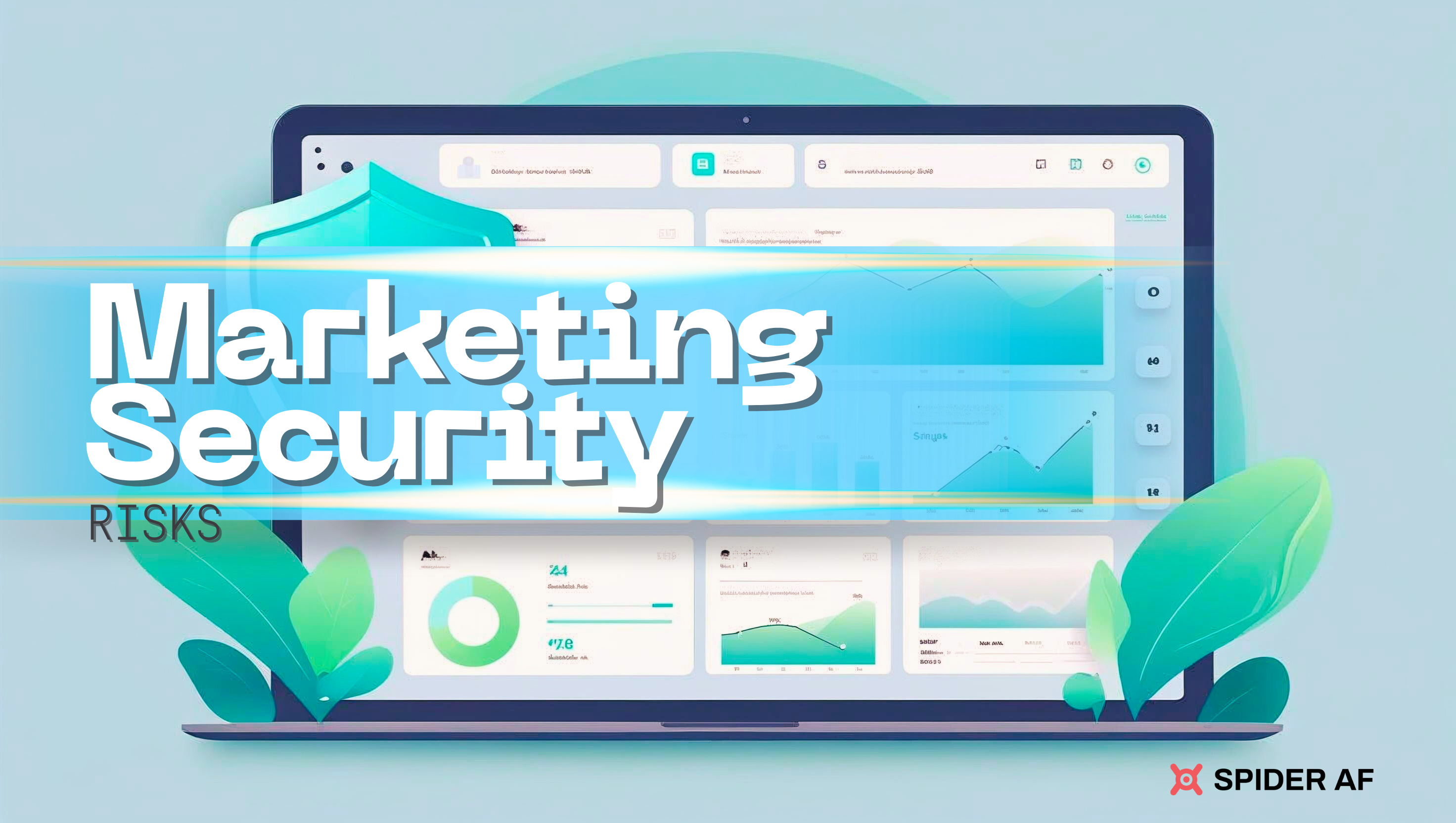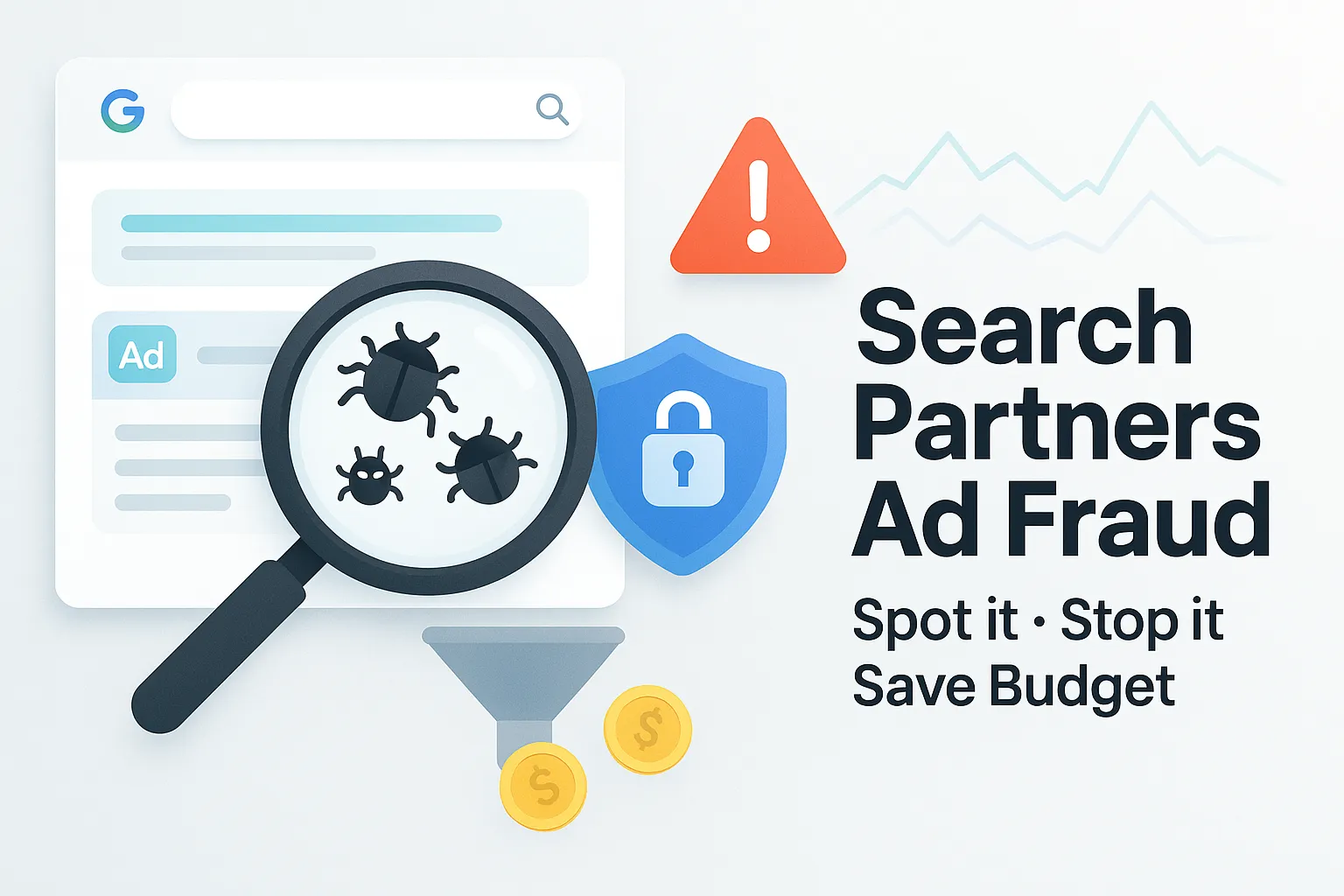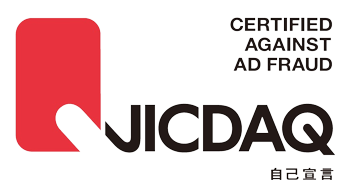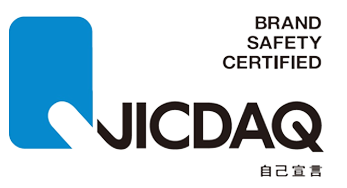Marketing Security Risks: How to Protect Brand Integrity, Data, and Ad Spend

Introduction
Marketing teams today are responsible for more than audience targeting and creative strategy. As digital marketing becomes more complex, marketers are increasingly responsible for systems that directly affect customer experience, privacy, and website security. From advertising platforms to analytics integrations and website scripts, the marketing stack has expanded into areas that were traditionally managed by IT.
This shift has introduced a new category of operational threats: marketing security risks. These risks include issues such as bot traffic inflating campaign metrics, unauthorized third-party scripts collecting user data, and outdated tools exposing websites to known vulnerabilities. Many of these threats do not originate from malicious behavior within the marketing team. Instead, they result from a lack of visibility into the tools and technologies marketers rely on daily.
Security issues in marketing environments are often difficult to detect without specialized monitoring. For example, bots can simulate legitimate ad clicks and inflate key performance indicators, which may lead to wasted media spend. Similarly, legacy JavaScript libraries can contain known security vulnerabilities that go unnoticed in code repositories or within tag managers. Third-party scripts, which are widely used to enable chat tools, analytics, and personalization features, can introduce risks if they are not regularly audited.
This article provides a practical overview of the most common marketing security risks in 2025, with a focus on how they affect budget efficiency, data integrity, and compliance. It also outlines real-world examples and solutions that help organizations address these issues before they lead to business impact. Tools such as Spider AF PPC Protection and Spider AF SiteScan play a critical role in identifying and mitigating risks across paid media and website infrastructure. For marketing leaders, understanding these threats is the first step toward protecting brand reputation, user privacy, and campaign effectiveness.
Marketing Security Risks Are Real and Rising
Digital marketing involves complex systems, and that complexity introduces marketing security risks such as ad fraud, data leakage, script vulnerabilities, and website compliance issues.
Ad fraud is increasing. According to Spider AF's 2025 White Paper, estimated global losses from digital advertising fraud reached $37.7 billion in 2024 and are projected to grow to $41.4 billion in 2025. This projection is based on analysis of more than 4.15 billion ad clicks, with an observed average fraud rate of 5.1%, applied to a global digital ad spend of $739.4 billion.
Most websites rely heavily on external technologies. 94.5% of websites load third-party scripts, many without adequate monitoring, increasing third-party risk and client-side security gaps.
🔗 Spider AF SiteScan
Regulations such as GDPR and PCI DSS 4.0.1 require continuous oversight of scripts and browser-side data handling. These frameworks emphasize client-side monitoring and clear consent mechanisms as part of digital compliance programs.
Marketing relies on customer data, real-time campaigns, and web performance. Disruptions in these areas can lead to both financial and reputational harm. For example:
- Invalid ad clicks generated by bots can distort analytics and drain budget
- Outdated JavaScript libraries may expose users to known vulnerabilities
- Unmonitored scripts or widgets can leak data or reduce site performance
Addressing marketing security risks requires visibility into ad traffic, web scripts, and user data handling. Spider AF PPC Protection helps filter bot traffic and invalid impressions before they affect performance metrics, while Spider AF SiteScan monitors client-side code execution, detects unauthorized changes, and supports compliance with evolving security standards.
By identifying threats such as click fraud, browser-based vulnerabilities, and third-party exposure, marketing teams can maintain trust, improve data accuracy, and protect their budget.
Why Marketing Security Risks Should Be a Top Priority

The financial and reputational cost of ignoring marketing security
Marketing departments are accountable not only for audience reach and brand messaging but also for the integrity of campaign data and the security of the tools they deploy. In 2024, companies without ad fraud countermeasures experienced an average fraud rate of 5.12%, according to Spider AF’s 2025 White Paper. In some high-risk cases, over 51.8% of advertising budgets were compromised by fraud-related activity.
This level of waste undermines more than performance metrics. It directly affects:
- Return on ad spend (ROAS)
- Lead quality and conversion rates
- Brand trust and executive confidence in marketing operations
The same report found that conversion rates (CVR) for legitimate traffic averaged 2.54%, while clicks classified as fraudulent or invalid converted at just 1.29%. That’s a nearly 50% drop in performance, emphasizing how undetected fraud leads to poor optimization decisions.
As marketing security risks increase in scope and sophistication, the absence of proactive defenses can result in long-term reputational damage and lost customer trust; particularly when security lapses lead to visible public incidents or data leakage.
How digital transformation increased exposure to cyber threats
Modern marketing stacks include dozens of interconnected tools, APIs, and browser-executed scripts. These elements, while essential to data-driven growth and personalization, can expose organizations to vulnerabilities when left unmonitored.
Common risks include:
- Legacy JavaScript libraries with known security flaws (e.g., outdated jQuery)
- Residual test scripts or duplicate tags left in Google Tag Manager
- Unvetted third-party integrations loading from unfamiliar domains
Over 94.5% of websites rely on third-party scripts, yet most organizations lack a clear inventory or change management process for them. These scripts can slow performance, collect personal data without consent, or inject malicious code through cross-site vulnerabilities.
Tools like Spider AF SiteScan offer browser-level visibility by detecting unauthorized or slow-loading scripts, flagging compliance risks, and improving operational hygiene for marketing and web teams. Without such tools, seemingly minor issues (like an outdated widget or misconfigured API) can evolve into compliance violations under GDPR or PCI DSS 4.0.1.
Budget Waste and Compliance Violations
Marketing security issues typically result in:
- Inflated ad metrics due to bots or invalid clicks
- SEO penalties from malicious scripts
- Regulatory violations from unmonitored tracking pixels or cookies
- Data exposure via weakly secured forms or integrations
Even a single compromised tag can break trust with users and regulators alike.
Marketing Tech = Attack Surface
Modern stacks rely on dozens of plug-ins, APIs, and third-party tools. Without active monitoring, risk accumulates. Examples include:
- No-code tools quietly leaking data
- Legacy libraries (e.g., jQuery) with known exploits
- Misconfigured tag managers holding test or abandoned scripts
As marketing gains more autonomy, it becomes both a more valuable and a more vulnerable target.
Top Marketing Security Risks in 2025
.png)
1. Ad Fraud and Invalid Traffic (IVT)
What is it?
Ad fraud involves non-human clicks or fake impressions generated by bots, click farms, or spoofed domains. These fraudulent interactions skew analytics and waste ad dollars.
Why it matters
Reports estimate that up to 36% of digital ad spend falls victim to invalid traffic globally, and some campaigns experience up to 50% non-human traffic.
🔗 Source
What can be done?
Spider AF PPC Protection filters suspect clicks in real time, preventing fraud from compromising campaign performance.
2. Third-Party Script Vulnerabilities
What is it?
Most websites rely on external scripts for features such as tracking, chat, and analytics. Many of these dependencies are loaded without ongoing oversight.
Why it matters
A study of one million websites found that more than 80% load JavaScript from external sources, and over 60% leak user data to third parties.
🔗 Source
These scripts introduce risk vectors such as malvertising, data leakage, and supply chain threats.
What can be done?
SiteScan provides visibility and control over script sources and execution behavior, helping maintain performance and security standards.
3. Outdated JavaScript Libraries and XSS Risk
What is it?
Using outdated versions of client-side libraries like jQuery can leave web pages vulnerable to cross-site scripting attacks.
Why it matters
Research reveals that 37% of websites use at least one library with known vulnerabilities—sometimes delayed by years.
🔗 Source
What can be done?
SiteScan monitors libraries in use and alerts teams to outdated or unsanctioned code that requires updating.
4. Phishing and Brand Impersonation via Campaign Channels
What is it?
Cybercriminals often impersonate trusted brands in email or ad spots to lure users into visiting phishing pages or installing malware.
Why it matters
These attacks erode trust and can expose sensitive user data. And yet, they often go unnoticed without monitoring client-side changes.
What can be done?
- Enforce email domain safeguards like SPF, DKIM, and DMARC
- Use SiteScan to detect suspicious script injections or redirects on campaign landing pages
5. Performance and Compliance Risks from Script Misuse
What is it?
Unregulated or outdated scripts can harm page speed, UX, and compliance—especially in regulated environments.
Why it matters
Large enterprises commonly load nearly 47 third-party scripts, raising performance and security challenges.
🔗 Cloudflare Report
What can be done?
SiteScan tracks page load impact and supports compliance with evolving standards like PCI DSS 4.0.1 through real-time alerts and script logging.
6. Social Media Account Exploits
What is it?
Unauthorized access to brand social accounts can lead to phishing messages, malware distribution, or damaging posts.
Why it matters
Hackers may leverage these platforms to launch fraudulent campaigns or hijack audience trust.
What can be done?
- Require multi-factor authentication (MFA)
- Use role-based access controls
- Leverage PPC Protection to filter suspicious traffic originating from social channels
Types of Ad Fraud to Watch
Building a Resilient Marketing Security Strategy
Marketing teams can reduce risk and improve operational resilience by taking a structured approach to security across campaigns, websites, and tools. The following tactics support fraud prevention, data protection, and long-term marketing compliance.
Conduct Regular MarTech Audits
Many threats originate from outdated or untracked technologies. Quarterly audits should include:
- Identifying unused or redundant tracking tags
- Reviewing access permissions across tools
- Detecting outdated JavaScript libraries or plug-ins
- Evaluating integrations for API misconfigurations
Spider AF SiteScan supports this process by scanning client-side code and mapping third-party script dependencies. This level of visibility helps marketers find and remove risky assets that may not be caught by traditional IT reviews.
Enforce Data Governance and Compliance Standards
Marketing departments handle significant volumes of user data through forms, cookies, and analytics platforms. To ensure privacy compliance and maintain data integrity:
- Limit data collection to what is necessary
- Use explicit consent frameworks that align with GDPR and CCPA
- Monitor where and how data is transmitted from the browser
Client-side monitoring tools like SiteScan alert teams to suspicious script activity and unauthorized data access, supporting requirements for regulations such as PCI DSS 4.0.1.
Educate Marketing Teams on Threat Awareness
Non-technical marketers play a key role in preventing security issues. Training should cover:
- Identifying phishing emails and brand impersonation attempts
- Recognizing unauthorized ad placements or redirects
- Following password hygiene and multi-factor authentication protocols
A shared understanding between marketing and IT improves response times and prevents escalation of preventable incidents.
Automate Risk Detection and Response
Manual reviews often fail to keep up with dynamic risks such as IVT or fast-changing script behavior. Automating key defenses includes:
- Real-time fraud detection tools for ad campaigns
- Tag behavior monitoring to catch anomalies
- Logging all script changes for audit readiness
Spider AF PPC Protection and SiteScan work together to help marketing teams respond faster to both traffic-based threats and browser-side vulnerabilities.
Real-World Results: Case Studies and Use Cases
Real examples demonstrate the practical benefits of implementing a security-first marketing strategy.
PPC Protection Case: Vienna Locksmith Reduces IVT by 90%
A local locksmith in Vienna was facing a high rate of competitor click fraud on Google Ads. After deploying Spider AF PPC Protection:
- Invalid traffic dropped by more than 90%
- Campaign efficiency improved significantly
- Spend was reallocated toward high-intent users
Agency Use Case: OOm Pte Ltd Preserves Client Budgets
Digital agency OOm Pte Ltd, managing over 300 client campaigns, used Spider AF to:
- Prevent invalid traffic from skewing performance data
- Detect anomalies in real-time
- Strengthen client trust and maintain brand safety
Client-Side Risk: jQuery Vulnerability Exploited in 2025
The U.S. Cybersecurity and Infrastructure Security Agency (CISA) added a five-year-old jQuery XSS vulnerability to its Known Exploited Vulnerabilities catalog in 2025. This highlights the persistent risk of relying on outdated JavaScript libraries.
Spider AF SiteScan can help prevent similar issues by flagging outdated code and offering real-time script integrity checks.
Conclusion: Taking Ownership of Marketing Security
Modern marketing operations rely on digital tools, third-party integrations, and real-time data. As these systems expand, so do the risks associated with them. Marketing security risks aren't theoretical, nor are they solely the responsibility of the IT department; they affect campaign performance, user privacy, and regulatory compliance.
In 2025, the most common threats facing marketers include:
- Invalid traffic inflating KPIs and draining budgets
- Vulnerabilities in third-party scripts and legacy code
- Data leakage and non-compliance with GDPR and PCI DSS
- Malicious code injected through unmanaged tags or ad content
Proactive security is no longer optional for growth-focused teams. By integrating tools like Spider AF PPC Protection and Spider AF SiteScan, marketers can detect and prevent threats before they escalate—without slowing down campaigns or development cycles.
Spider AF PPC Protection helps you maintain accurate ad performance data by blocking click fraud and filtering invalid traffic in real time.
Spider AF SiteScan gives your team full visibility into client-side scripts, identifies risks related to browser-based code, and helps enforce compliance standards like PCI DSS 4.0.1.
Ready to secure your marketing stack?
✅ Get your free Website Security Check with Spider AF SiteScan
🔍 Instantly identify risky scripts, legacy code, and third-party vulnerabilities on your website.
Request Your Free Scan
✅ Start a 14-day free trial of Spider AF PPC Protection
📊 Protect your ad spend from bots, fake clicks, and spoofed domains.
Start Your Free Trial
By acting now, marketing teams can take measurable steps toward reducing fraud, improving user trust, and maintaining long-term campaign efficiency















.png)






